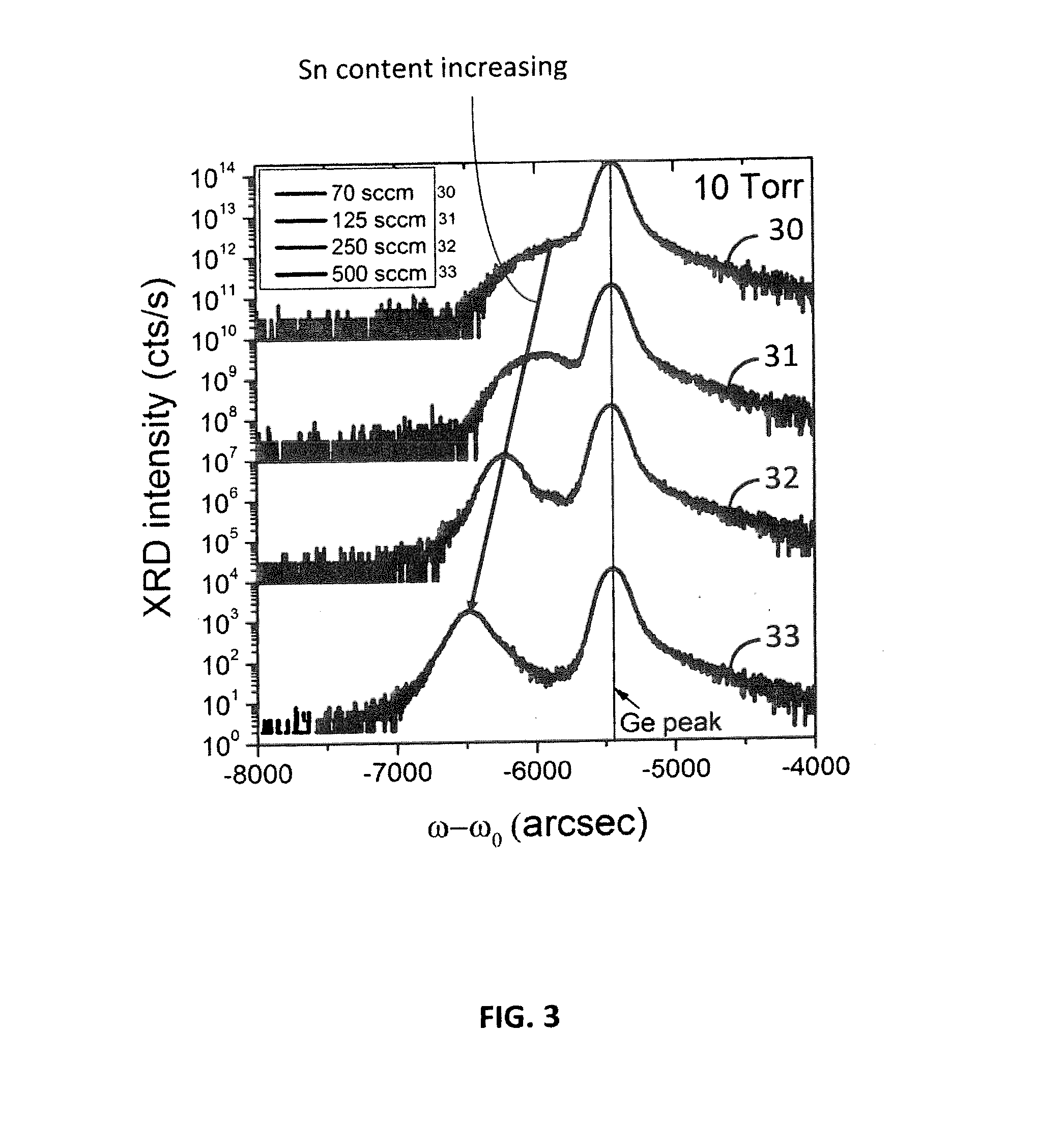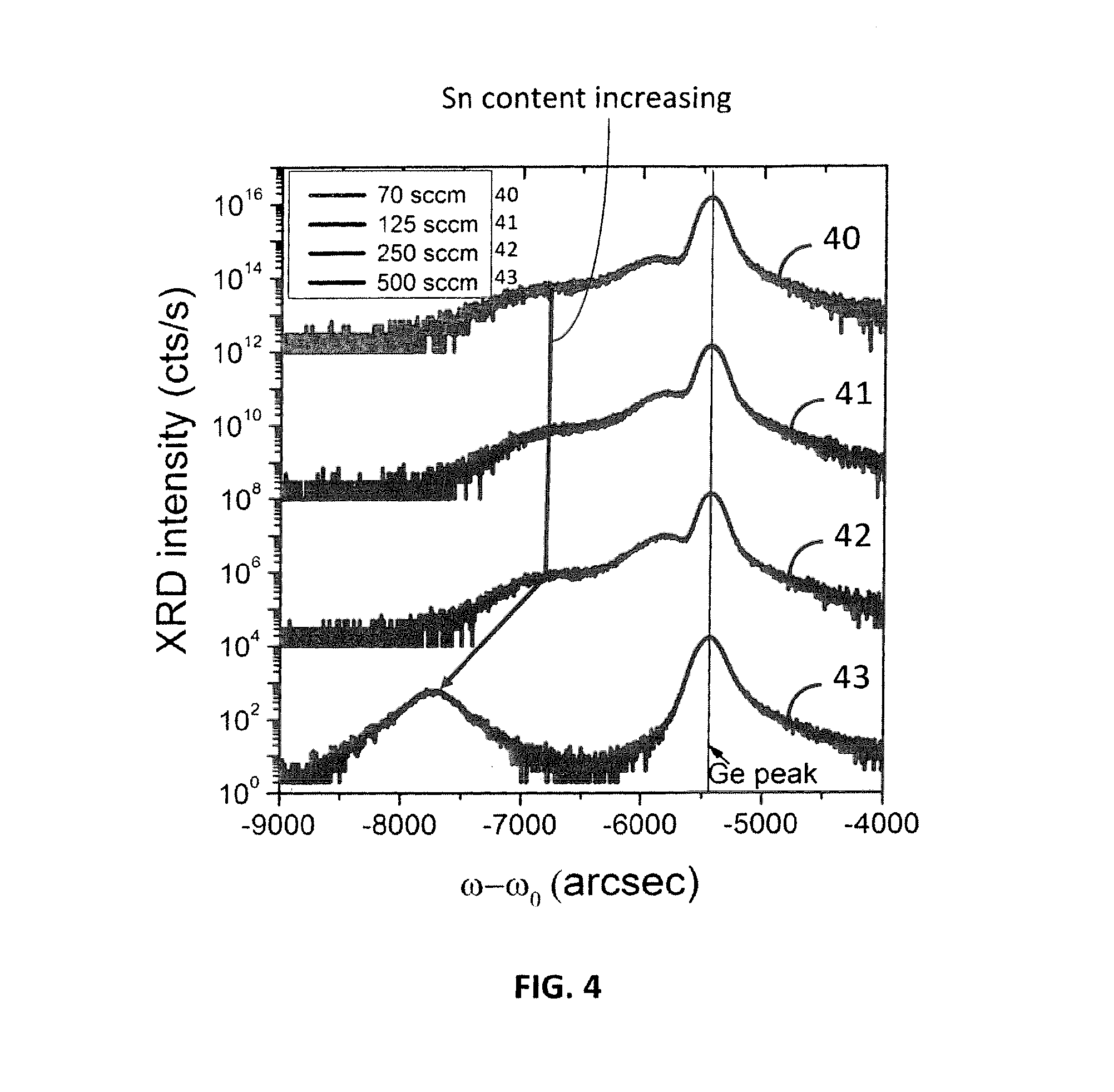Method for Growing a Monocrystalline Tin-Containing Semiconductor Material
a monocrystalline tin-containing, semiconductor technology, applied in the direction of crystal growth process, photovoltaic energy generation, electrical equipment, etc., can solve the problems of low throughput, high cost, and limited substitutional sn, and achieve the effect of reducing the cost of snd
- Summary
- Abstract
- Description
- Claims
- Application Information
AI Technical Summary
Benefits of technology
Problems solved by technology
Method used
Image
Examples
examples
[0076]FIG. 1 shows the growth rate of epitaxially grown GeSn as function of the ratio (SnCl4 flow) / (Ge2H6 flow) at 320° C. and different total pressures in the reactor (reduced pressure: 10 Torr, 100 Torr; atmospheric pressure-ATM).
[0077]In this first example illustrated in FIG. 1 the GeSn layer is overlying and in contact with a Ge buffer layer having a thickness of 50 nm on a silicon substrate. As said before, diluted digermane with a dilution of 1% in H2 is supplied to the CVD reactor. In this example 250 sccm Ge2H6 was employed and the ratio was varied by modifying the SnCl4 flow between 20 sccm and 100 sccm. By modifying the SnCl4 flow and the total pressure in the reactor for a selected value of the Ge2H6 flow, different partial pressures of the Sn precursor in the reactor are created. It can be seen that growth rates of the GeSn layer are higher at higher pressures in the CVD reactor. Furthermore, growth rates of the GeSn layer increase with increasing SnCl4 / Ge2H6 ratio, exce...
PUM
| Property | Measurement | Unit |
|---|---|---|
| temperature | aaaaa | aaaaa |
| temperature | aaaaa | aaaaa |
| temperatures | aaaaa | aaaaa |
Abstract
Description
Claims
Application Information
 Login to View More
Login to View More - R&D
- Intellectual Property
- Life Sciences
- Materials
- Tech Scout
- Unparalleled Data Quality
- Higher Quality Content
- 60% Fewer Hallucinations
Browse by: Latest US Patents, China's latest patents, Technical Efficacy Thesaurus, Application Domain, Technology Topic, Popular Technical Reports.
© 2025 PatSnap. All rights reserved.Legal|Privacy policy|Modern Slavery Act Transparency Statement|Sitemap|About US| Contact US: help@patsnap.com



